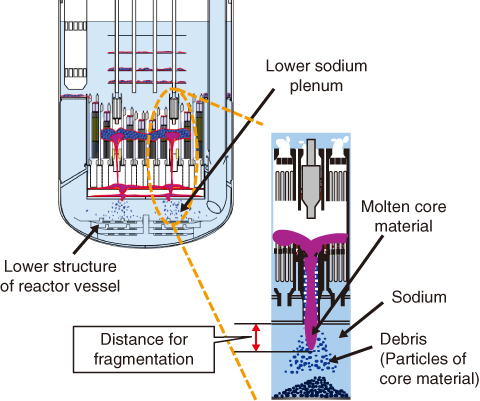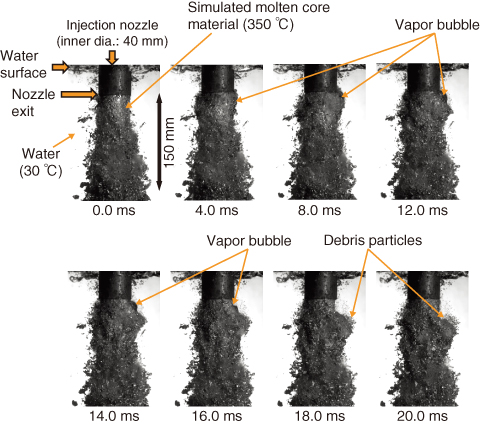
Fig.7-2 In-vessel retention (IVR) of molten core material

Fig.7-3 Images of fragmentation behavior
To contain the impact of core disruptive accidents (CDAs) of sodium-cooled fast reactors in the reactor vessels, it is important to retain molten core material within the vessel during CDAs. This concept is called in-vessel retention (IVR).
Molten core material discharged into the lower sodium plenum through control rod guide tubes has the potential to impose a significant thermal load on the lower structures of the reactor vessels, and thus may cause reactor vessel failure, compromising IVR. However, as shown in Fig.7-2, if the molten core material is fragmented into smaller particles well before it reaches the lower structures, the thermal load should be significantly reduced by enhanced quenching of this material. Hence, the development of a method for evaluating the distance for fragmentation is crucial for achieving IVR.
In this study, to obtain experimental data on the distance for fragmentation, we conducted a fundamental experiment that simulated the discharge behavior of molten core material under a sodium-cooled condition using simulants which enabled visual observation, as well as the establishment of a wide range experimental condition (e.g., discharge diameters). In the sodium-cooled condition, it is believed that a heat transfer mode with a liquid-liquid direct contact should be maintained, since even though sodium boiling would occur, the formation of a stable vapor film should be hindered at the contact interface between the molten core material and sodium. Fig.7-3 shows the fragmentation behavior of the simulated molten core material in such a heat transfer mode, which was established by a combination of the simulated molten core material and water. The experimental results revealed that fragmentation in the sodium-cooled condition was induced by thermal factors, including local coolant boiling and vapor expansion, in contrast to light water reactor conditions where the fragmentation would be induced by hydrodynamic instabilities. Moreover, the experimental results showed that thermal interactions facilitated the fragmentation and reduced the distance for fragmentation down to approximately 10 percent of the value predicted using the existing representative correlation.
The present study, which contributes to the development of a method for evaluating the distance for fragmentation, suggests that the high coolability of sodium is effective for IVR. This study was sponsored by the Ministry of Education, Culture, Sports, Science and Technology of Japan (MEXT).
<Previous: 7 Research and Development of Advanced Nuclear Systems | Next: 7-2 >